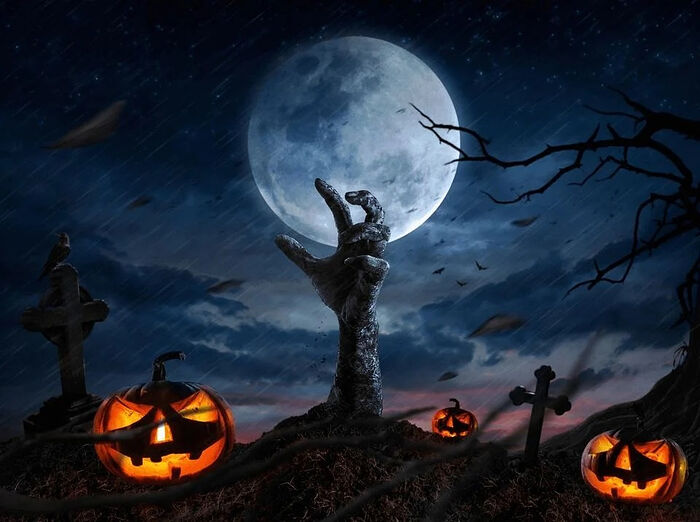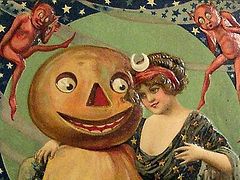Tbilisi, October 27, 2023
Though Halloween was born within the bosom of the Church, it has been combined and corrupted by pagan aspects, and thus is unacceptable for the Orthodox faithful today, says a new statement from the Georgian Orthodox Church.
The Public Relations Service of the Georgian Church published a statement yesterday discussing the initial establishment of the feast of All Saints, with the preceding day becoming known as All Hallows’ Eve, and its corruption over the centuries, as the veneration of the saints was replaced by revelry and macabre personifications.
The Georgian Church’s statement reads:
The Halloween event is based on religious foundations and contradicts the Orthodox ecclesiastical consciousness.
There are various interpretations about Halloween. The main story is about how a pious tradition can merge with a qualitatively foreign tradition and completely degenerate.
The majority of people associate Halloween with the Irish festival Samhain and with Charlemagne (742?-814).
In order to enlighten his empire, Charlemagne began settling Irish Orthodox monks on the mainland and under their guidance established monasteries and schools, which helped spread Irish traditions within European intellectual circles.
However, along with the Orthodox monks, pantheistic (e.g., Johannes Scotus Eriugena) and other non-Orthodox Irish thinkers also settled in the Frankish and neighboring territories.
It seems that in the 8th-9th centuries, it was they who brought Samhain and other customs to these territories, which the Irish Orthodox monks opposed from the beginning.
This wave from the West met iconodule migrants from the East who were fleeing the iconoclastic policies of the Byzantine emperors with icons and relics.
These exiles were embraced by the then-rulers of the Roman Church, the Popes, who were part of the indivisible Christian Church.
Pope Gregory II convened a Church council in 727 to support icon veneration. Pope Gregory III established All Saints’ Day in the Roman Church in 732, setting its date as November 1. Pope Gregory IV extended the celebration to the entire Western Church in 837.
Like every other church holiday, All Saints’ Day also begins on the evening of the previous day (Halloween means “All Hallows’ Eve,” the eve of All Saints’ Day), during which clergy and parishioners held processions in churches and cities with religious paintings and relics.
This feast was established among the Christians of Western Europe.
Apparently, due to calendar coincidences, this intersection occurred during the Carolingian Renaissance – the Irish monastic-scholastic centers with elements of pagan atavism (Samhain) and the Roman Church holiday were connected with each other, further augmented in the 10th century by the establishment of All Souls’ Day (which is observed on November 2, the day after All Saints’ Day).
This is how the great confusion began.
However, as a result of the Reformation, the veneration of saints was abolished in most parts of Western Europe and among the large part of Christians on the American content.
Between the 17th and 19th centuries, almost all the traditions that we see in modern Halloween were formed, mainly in America.
Despite the modern show business industry’s attempts to separate Halloween from its religious rituals, this event was and remains rooted in the Church, but corrupted by paganism into an event during which, instead of venerating the icons and relics of the Lord and His saints, people dedicate time to masquerades and revelry, impersonating various macabre characters and demonic personifications.
Thus, Halloween is completely unacceptable for the Orthodox faithful.
Follow OrthoChristian on Twitter, Vkontakte, Telegram, WhatsApp, MeWe, and Gab!




